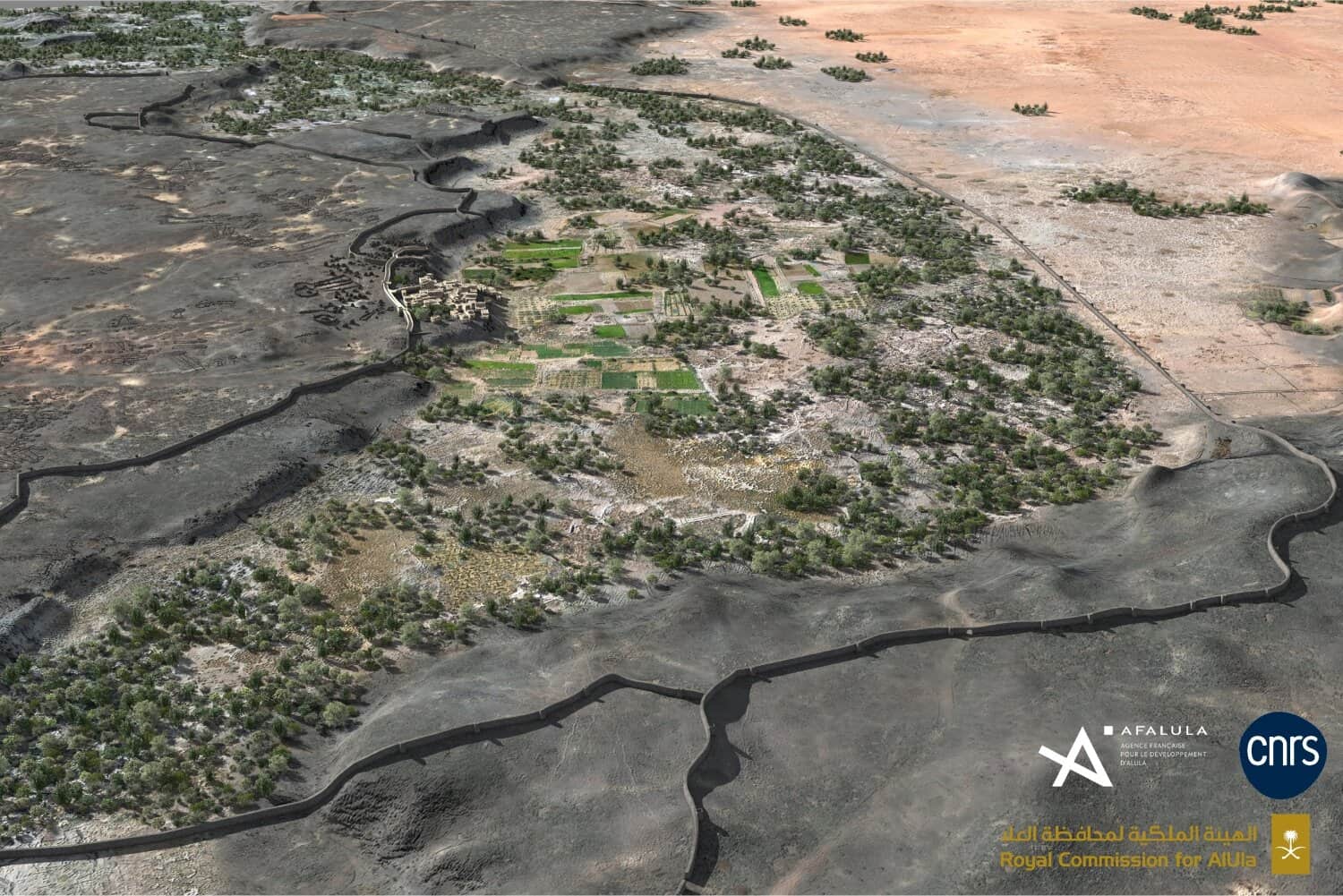Archaeologists using remote sensing data and field surveys have uncovered a massive system of fortifications spanning 14.5 kilometers (9 mi) in length, up to 2.4 meters (7.9 ft) in thickness, and approximately 5 meters (16.4 ft) in height. The system was built 4,000 years ago and sheds new light on pre-Islamic populations in Arabia. They call it the Khaybar Oasis.

An oasis in the desert
The North Arabian Desert is not an easy place to inhabit. It isn’t a pleasant place now, and it definitely wasn’t a pleasant place to live during the Bronze Age. So, when people found an oasis, they clung to it.
During the Bronze Age (which, in Arabia, lasted from around 3300 to 1200 BCE), several oases played crucial roles in the region’s social, economic, and cultural evolution.
An oasis is a fertile area in a desert or semi-arid region, where water is available from underground springs, rivers, or aquifers. This natural water source enables the growth of vegetation and supports wildlife, creating a stark contrast to the surrounding arid landscape. In desert regions, oases served as critical havens and hubs for human settlement, agriculture, and trade. They provided a reliable source of water in a dry and harsh environment, making them natural spots for communities to flourish.
Excavations in these areas have revealed a wealth of information about Bronze Age societies in Arabia. Oases were not only agricultural centers but also nodes in extensive trade networks, so they have a range of important goods that archaeologists can use to rebuild what the society would have looked like.
This is why the new find is so important. Researchers carbon dated pieces of the walls and found that the system of fortifications was built between 2250 and 1950 BCE. Today, less than half (around 41%) of the fortification still stands, but we’re still talking about 5.9 km (3.6 miles). Overall the fortifications enclosed 1,100 hectares and had 74 bastions.
This hints at a thriving society
It’s likely that this wouldn’t have been the only fortification around. Archaeologists believe the Khaybar Oasis would have been a part of a larger fortification system — a network of walled oases. But it’s unclear who built this structure, and why exactly it was so big. If you build a fortification this big, you probably have a reason, but archaeologists aren’t sure which population built the rampart or which populations they were trying to defend against.
“The Khaybar oasis is a hotbed of local history in northwest Saudi Arabia. It has been preserved for millennia, and its human occupation seems to have been uninterrupted from earliest prehistoric times to the present day,” reads a release from Khaybar Longue Durée Project, through which the research was carried out.
From this project, researchers have also found that the first occupations of the oasis actually happened much earlier, during the Paleolithic and Neolithic periods. They found several funerary structures as well as several desert kites (dry stone wall structures developed in the area) as well as a number of inscriptions and rock art from different periods and traditions.
This all shows that there’s a long history of civilizations in Arabia that we’ve yet to discover. It’s also unclear how this system of oasis fortifications fits into the greater Bronze Age context. This was a period when fortified settlements became colossal in several parts of the world — it’s also when the European “megaforts” started showing up, for instance. No doubt, archaeologists have their work cut out for them.
Journal Reference: Discovery of immense fortifications dating back 4,000 years in north-western Arabia, Journal of Archaeological Science: Reports (2024).









